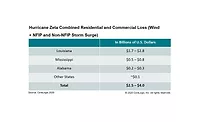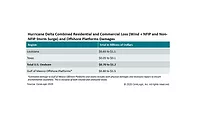Weekly Hands-on How-To powered by KnowHow
How to Respond to Post-Hurricane Large Losses
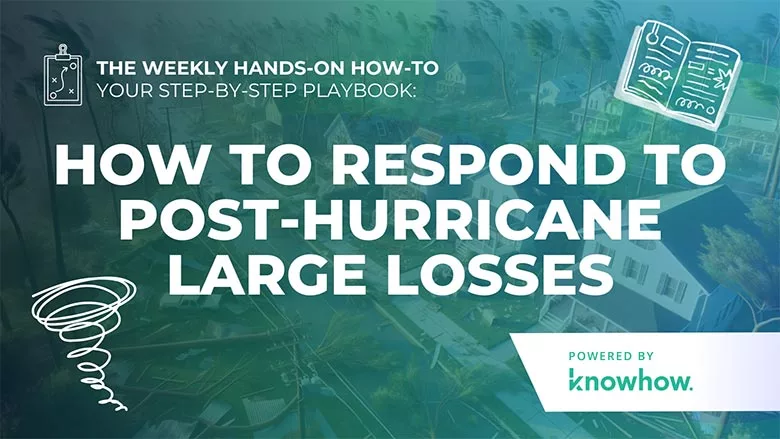
Hurricanes leave more than just physical damage in their wake. They disrupt lives, destroy businesses, and challenge restorers to respond with both skill and heart. This guide, powered by KnowHow, is your blueprint for navigating the aftermath of these large storms. It's designed to equip every restorer with not only the steps for effective recovery but also the empathy to handle each task with care.
From assessing immediate safety hazards to establishing a temporary workspace and providing emotional support, each step is a critical component of a comprehensive emergency response strategy.
KnowHow is here to ensure that your team is prepared to respond with efficiency and compassion. Whether you're facing your first hurricane season or are a seasoned veteran, this guide is your companion in navigating the aftermath with confidence and care.
Note: This Weekly Hands-On How-To was based on this template in KnowHow’s template library.
Step 1: Assess the Safety
Assess the immediate safety of the location and surrounding areas post-hurricane. Look for visible hazards like fallen debris, structural damage, or flooding. Take necessary precautions to ensure employee safety and prevent further harm. If any dangers are identified, evacuate the area and alert emergency services. Continuously monitor safety conditions and provide regular updates to employees.
Step 2: Activate Communication Channels
Ensure all communication channels are activated and functional to facilitate effective communication during and after the hurricane. This includes emergency notification systems like text messages or phone calls to inform employees and provide updates. Activate internal communication channels such as email lists or dedicated platforms for timely information sharing.
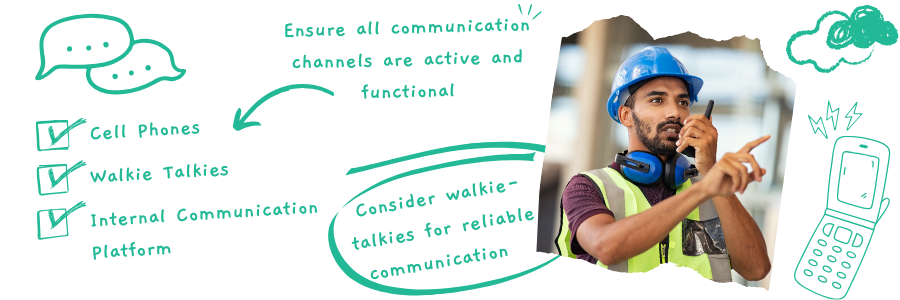
Step 3: Provide Instructions for Reporting
Clearly communicate the process for reporting during and after the hurricane to all employees. Provide clear instructions on how and when to report their status, location, and any specific needs. Ensure employees know the designated reporting channels, such as phone numbers, email addresses, or online platforms
Step 4: Coordinate With Emergency Services
Coordinate with emergency services to ensure employee safety during and after the hurricane. Contact local response agencies like the fire and police departments, providing relevant workplace information and potential risks. Establish clear communication channels and protocols for receiving assistance and updates.
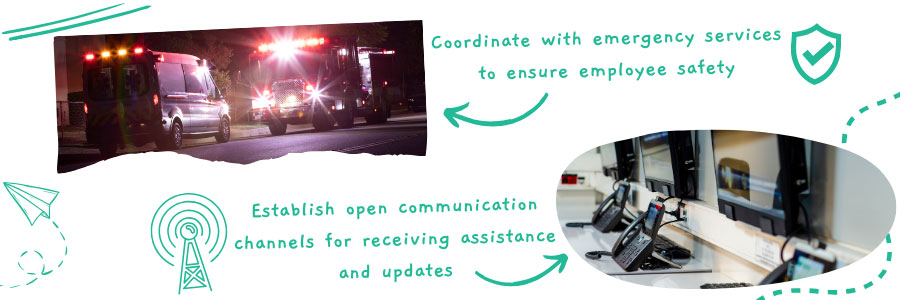
Step 5: Identify Essential Functions
Identify essential functions critical for maintaining operations during and after the hurricane. Review key tasks, roles, and responsibilities needed for business continuity. Consider alternative locations for essential functions if needed. Prioritize critical functions and allocate necessary resources to sustain operations during the emergency.
Step 6: Establish Temporary Workspace
Designate a secure and accessible temporary workspace for employees to continue work during and after the hurricane. Ensure the space is equipped with necessary resources like power, internet, and equipment. Communicate the location and access instructions to all employees beforehand.
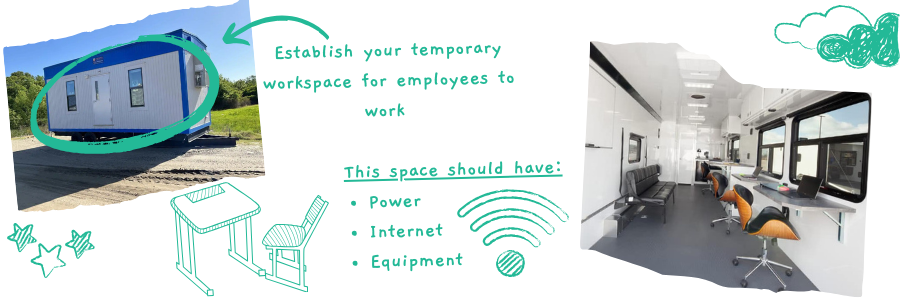
Step 7: Provide Safety Equipment
Equip all employees with necessary safety gear like hard hats, goggles, gloves, and vests. Ensure each worker has the appropriate equipment for their role and responsibilities. Train and refresh your workers on proper PPE usage and equipment maintenance. Regularly inspect and replace damaged equipment as required.
Step 8: Assign Roles and Responsibilities
Assign specific tasks and duties to individuals or teams for a coordinated response. Designate key personnel to oversee communication, logistics, safety, and coordination. Define roles clearly to streamline operations, improve communication, and ensure a prompt response.
Step 9: Implement Emergency Response Plan
Execute the emergency response plan by following outlined guidelines and procedures. Ensure employees understand the plan and their roles. Regularly review and update the plan based on changing circumstances or lessons learned.
Step 10: Monitor and Evaluate
Regularly monitor the emergency response program for efficiency and identify areas for improvement. Evaluate measures and procedures for effectiveness in safeguarding employees. Gather feedback for necessary adjustments. Continuously monitor and evaluate for ongoing effectiveness and preparedness.
Step 11: Provide Emotional Support
Offer a supportive environment for employees affected by the hurricane. Create opportunities for sharing experiences and provide resources for counseling or support. Listen actively, validate feelings, and reassure employees of their well-being.
Step 12: Document and Review
Review and document the emergency response program to ensure accuracy and effectiveness. Assess policies, procedures, and protocols for revisions based on previous incidents or feedback. Document all changes and updates for future reference.
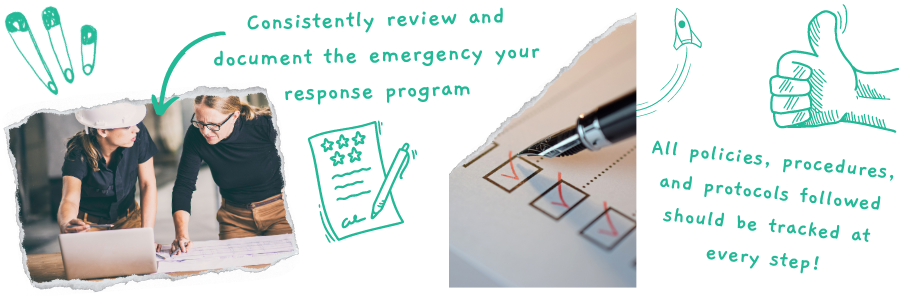
Step 13: Conduct Training and Drills
Train employees on emergency procedures and conduct drills for readiness. Develop the necessary skills and knowledge for an effective response. Identify and improve weaknesses in the response plan through regular training and drills.
Step 14: Stay Informed
Stay updated on hurricane progress and official announcements from authorities. Regularly check weather updates, local news, and emergency alerts. Keep emergency contacts available and maintain communication channels for updates. Stay aware of potential hazards and follow evacuation orders if necessary.
As hurricane season rolls in, the readiness of your team is paramount. With KnowHow's comprehensive resources at your disposal, your team is prepared to face every challenge with confidence. From initial safety assessments to establishing a temporary workspace, we are here to support your mission to restore normalcy in the lives of your clients with precision and professionalism.
Your role in navigating the aftermath of a hurricane is critical, and with KnowHow, you're never alone in this endeavor. Our platform is designed to ensure that you have easy access to the best practices, training, and on-the-job support needed to execute your tasks effectively.
Explore how KnowHow can further empower your team during hurricane season and beyond at tryknowhow.com.
Looking for a reprint of this article?
From high-res PDFs to custom plaques, order your copy today!




